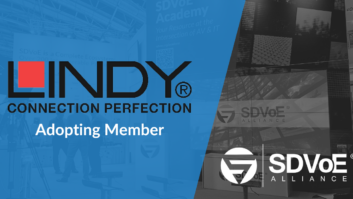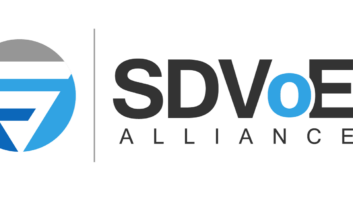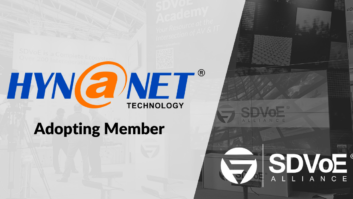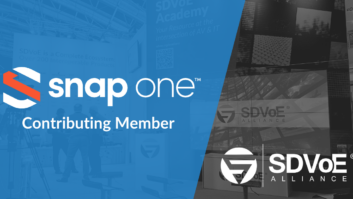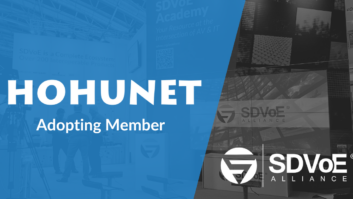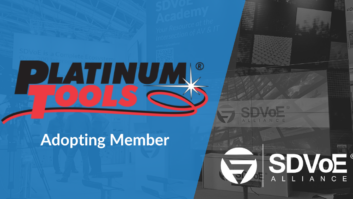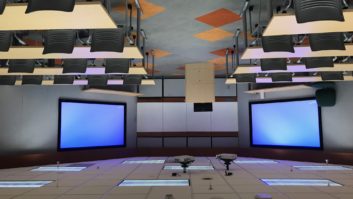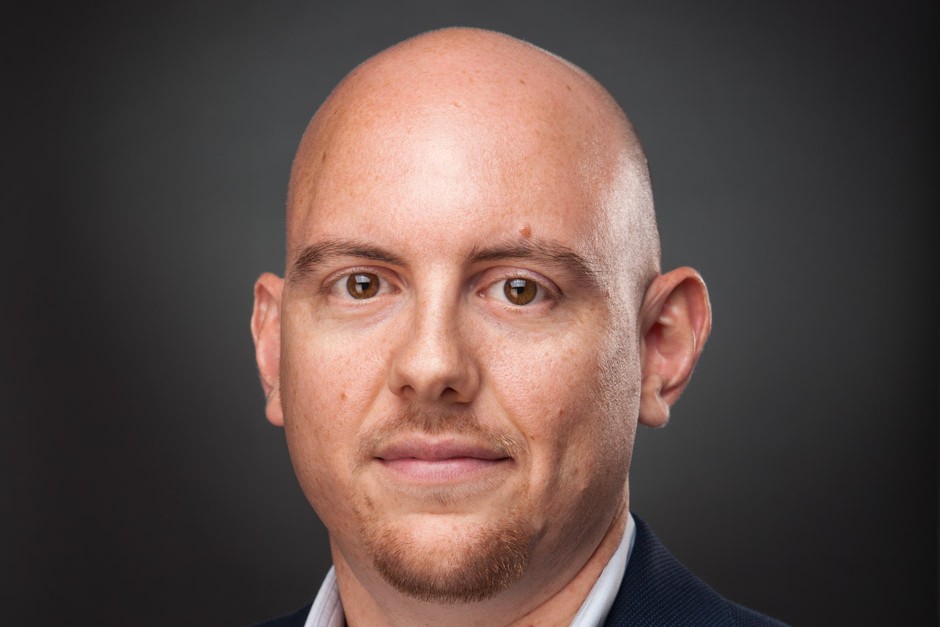
In the first part of this interview SDVoE Alliance president Justin Kennington outlined the thinking behind the Alliance and what it means for the market. Here he reveals what sort of companies they are looking to involve and what they get from membership.
At the time on this conversation you haven’t announced the founding members of the Alliance. But what types of companies are you are looking to get involved?
We expect all of AptoVision’s existing customers to sign up for this, because it gives them a very strong position in the market: a nice message to grab onto, and to present a unified front across all of them to the industry.
However, there are some very impressive names on our founding members list, and what’s very interesting is that they are not all AptoVision customers. Some of them I expect will never be AptoVision customers because they do not make AV distribution gear. We have players from other areas of the IT industry, from the chip manufacturing community and from the display community. Some of them from the IT space don’t have any significant sales in the pro AV channel, but they see this as a great opportunity to open an entirely new market to them.
This diversity is important to me personally because I wanted to have an ecosystem approach to the alliance. If it’s just AV box manufacturers – and I’m talking about my customers now, I have a lot of love and respect for them – then I think that weakens the story, as it’s just a lot of guys trying to sell boxes. But as an ecosystem and as a platform, we’re trying to drive change thorough the whole industry. I think that diversity of perspective gives us a strong likelihood of better ideas and gives us better credibility as well, when people realise how broadly thought out our ideas and concepts are.
If the membership is open to other chip manufacturers, does that mean that SDVoE is a methodology, rather than something that ties in AptoVision product specifically?
That’s a good way of thinking about it – it’s about a methodology. We don’t specify how you’re going to achieve the solution, but there are certain capabilities and performance standards that you need to adhere to: zero latency, uncompressed video quality and so on. Certainly you’ll be able to buy chips capable of SDVoE and not buy them from AptoVision.
What do companies give to become a member, and what do they get back?
Like any of these alliances, there are membership dues. Beyond that, we will be sponsoring presence at all the big tradeshows, and we’ll ask the alliance members to participate in those, through manpower, through equipment, to offer demonstrations.
One of the most important aspects in my opinion is we do plan to build a significant training and certification programme for users – installers and designers. We plan to debut that training at ISE this year.
I was previously at Crestron, where I was in charge of their Digital Media product. I got a lot of exposure to the industry’s transition from analogue to digital, and I learned very quickly how the industry can benefit from being trained on how to operate a new technology. I think there’s a lot of thirst in the designer and integrator community for learning to deal with IT systems in greater depth than before. We’ve been interacting with IT systems for some time, but now we’re really pouring our heart and soul into the IT side of things.
There’s even some nervousness and fear for some people that if they don’t catch up, if they don’t learn how to do this, they could be worried about their job. I want the opportunity to teach people that this doesn’t have to be scary, it doesn’t have to be hard – to teach them about the ways to design and manage video networks in this new paradigm.
To your question of what will be asked of the membership, it’s to assist in large ways with this training. Our partners from the IT space will be very valuable – they already have courses and curriculum for the IT side of things; we’ll want to incorporating some of that into our training, shaped more to the AV industry; we want to be as hands on as possible – people will provide gear, training, and curriculum as the member companies collaborate to deliver courses.
And of course we’ll have ad campaigns and general outreach to the community and I expect members to benefit from that.
I want to get to a world where consultants, who generally aren’t willing to specify Brand X over Brand Y, will specify a technology. Today many specs say, ‘I want an HDBaseT system’. I want consultants and integrators to specify SDVoE systems – and that’s another way that the member companies will benefit, because they will be the only ones eligible to meet that spec.
Do you have any plans to create externally recognised standards around SDVoE – such as IEEE or InfoComm ANSI standards?
We have some ideas on that topic, but it’s early days. The board of directors will be considering this in the first year of the Alliance. As our message is primarily on software, we’ll have some debates on the degree to which we want to standardise things other than software. It will be an interesting discussion; we haven’t had it yet.
Have you learned any lessons from other technology alliances in the industry in how you formulated your approach?
One example comes to mind. When AVB first came out, they didn’t want to focus on the value they could bring out to, and in from, worlds outside pro AV: they wanted to focus on the pro AV manufacturers in their alliance and not really talk about the IT side of the house, and the value that technology can bring to non-AV applications.
In contrast to that, a key factor for us has been to bring in the perspective and the knowledge of players outside the AV industry. More and more the lines will be blurred between where is it AV and where is it IT. Rather than try and maintain two sides of the fence, I want to embrace them both and push them together.
In the notes for this call, you’ve included a slide of the Gartner hype cycle – in which the analyst places a wide range of technologies on a time curve that includes categories such as ‘the peak of inflated expectations’, the ‘trough of disillusionment’ and the ‘plateau of productivity’. Why did you put that slide in, and what is your target timescale for SDVoE adoption?
According to Gartner, software-defined anything is just about to hit the trough of disillusionment! They give it two to five years to mainstream adoption. Our goal here at the SDVoE Alliance is to accelerate our way through that trough and get to productivity.
I put that slide in to show that these trends are larger than AV.
The fundamental idea is that although hardware is required and critical, it’s less and less important. More and more, you design hardware that’s flexible and fast, and let the software figure out what it needs to do. We see that trend in high-end data centre computing and long-haul networking; I want to bring that trend, which has already started to be successful in those places, to AV.
So we want to be a little ahead of the curve; that’s where I like to live. That’s why I sat through analogue to digital as a transition; that’s why I left Digital Media to come drive this thing. I think the trend is there, the inevitability is there. I want to be in front of it, and I want to get SDVoE to that plateau of productivity as quickly as possible. I want to turn that two to five years into one to three years. That’s a timeframe I would consider a great success if we can drive the bulk of the market over to SDVoE technology.
That’s a pretty huge statement, I understand: we’re talking about a multi-billion dollar space with some entrenched large players. But I think the pull of this platform approach is so powerful, just because of what it is – it can’t be resisted. Those that embrace it are either going to remain leaders or become new leaders, and those who reject it are going to be left behind.
